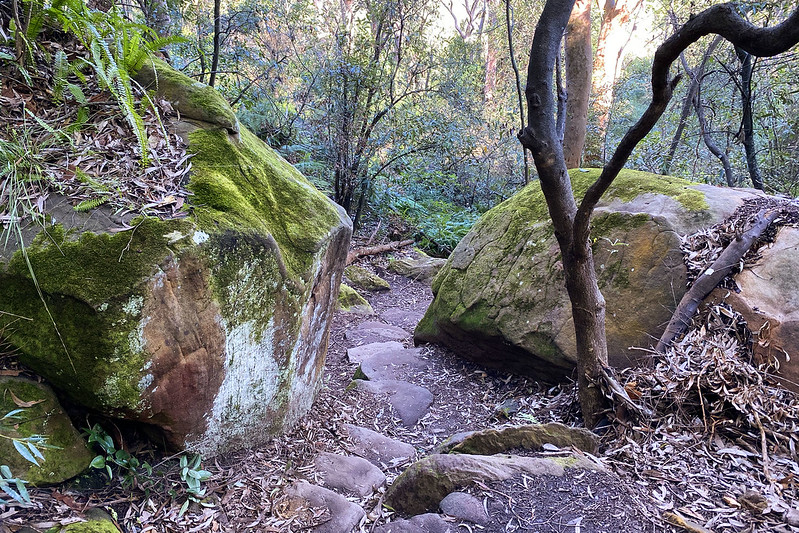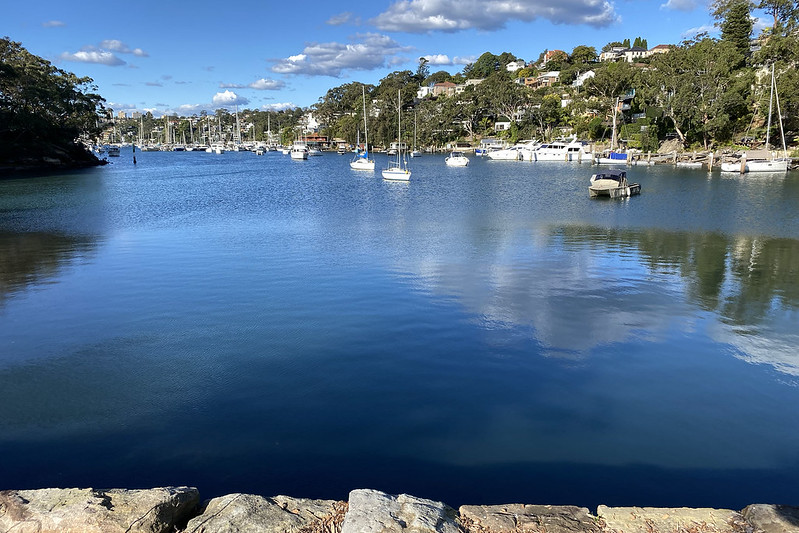A friend contacted me this morning and suggested we meet up for lunch, at a Japanese place a couple of suburbs over from where I live. I walked there (3.26 km according to Strava).
I got there a bit early and was really hungry, so I ordered some gyoza to eat while I waited.
I would have taken a photo of my main dish too, but I forgot in my hunger to get started when it arrived! After lunch, my plan was to walk home the long way, via a walking track that I noticed a while ago on Google Maps, which I’ve never walked before.
And so I set off to the Flat Rock Gully Walking Track. I had a little bit of a walk to get to the starting point. The first part of the walk was paved, and seemed popular with locals out for some exercise.
After crossing under a main road, the path became more of a bushwalk.
The walk followed Flat Rock Creek downstream, which was beautiful in places.
Eventually the creek spills into this cove on Middle Harbour.
This was the ending point of the walk that I wanted to do, but I still had a long walk back home! All together, the post-lunch walk was 9.12 km, for a total walking distance of 12.38 km. I was fairly worn out by the time I got home!
In other happenings, a friend commented on our group chat that he was watching a YouTube video of “stuff that kids are taught that is wrong”, and told us that it mentioned chameleons, and that—unlike what kids are told—they don’t change colour for camouflage, but rather to communicate and find mates. Someone else pointed out that Wikipedia disagrees, as its article on chameleons says they change colour for camouflage as well as those other purposes.
This began a half hour discussion over whether Wikipedia or a random YouTube video is more reliable. Rather than just haggle over it, I decided to check the literature, and quickly found:
- Stuart-Fox, D., Moussalli, A., Whiting, M. J. “Predator-specific camouflage in chameleons”, Biology Letters (2008) 4, 326–329. doi.org/10.1098/rsbl.2008.0173
- Stuart-Fox, D., Whiting, M. J., Moussalli, A. “Camouflage and colour change: antipredator responses to bird and snake predators across multiple populations in a dwarf chameleon”, Biological Journal of the Linnean Society (2006) 88, 437–446. doi.org/10.1111/j.1095-8312.2006.00631.x
These papers indicate clearly that at least some chameleons do in fact change colour for the purpose of camouflage. I was awarded the win for the conversation. Not only this, but these papers also found another very cool result. The chameleons they studied are hunted by both birds and snakes. Interestingly, when a chameleon sees a bird, it changes colour for camouflage in one way, but when it sees a snake, it changes colour in a different way. It turns out that birds and snakes have different colour vision receptors and see colour in different ways. (Bird vision is very similar to human colour vision, but snakes have less colour discrimination, similar to dogs.) So when a chameleon fears a bird, it changes colour to match its surroundings in a way that makes sense to humans. But when it fears a snake, it changes colour in a different way, which seems less well camouflaged to our human eyes (and to birds), but to a snake’s relatively colour-deficient vision it is actually better camouflaged.
This would be astonishing is it wasn’t actually just a simple consequence of evolution in action. But it’s still very cool.
New content today:






